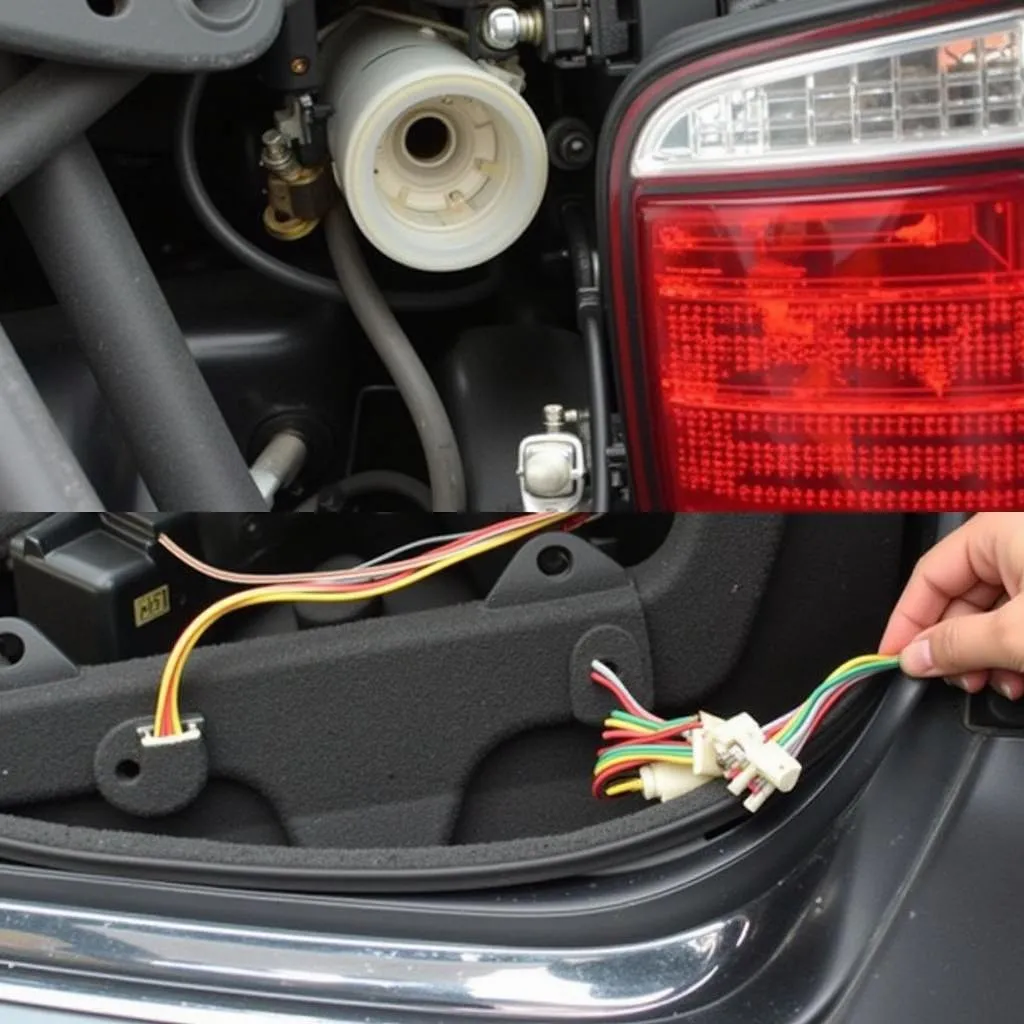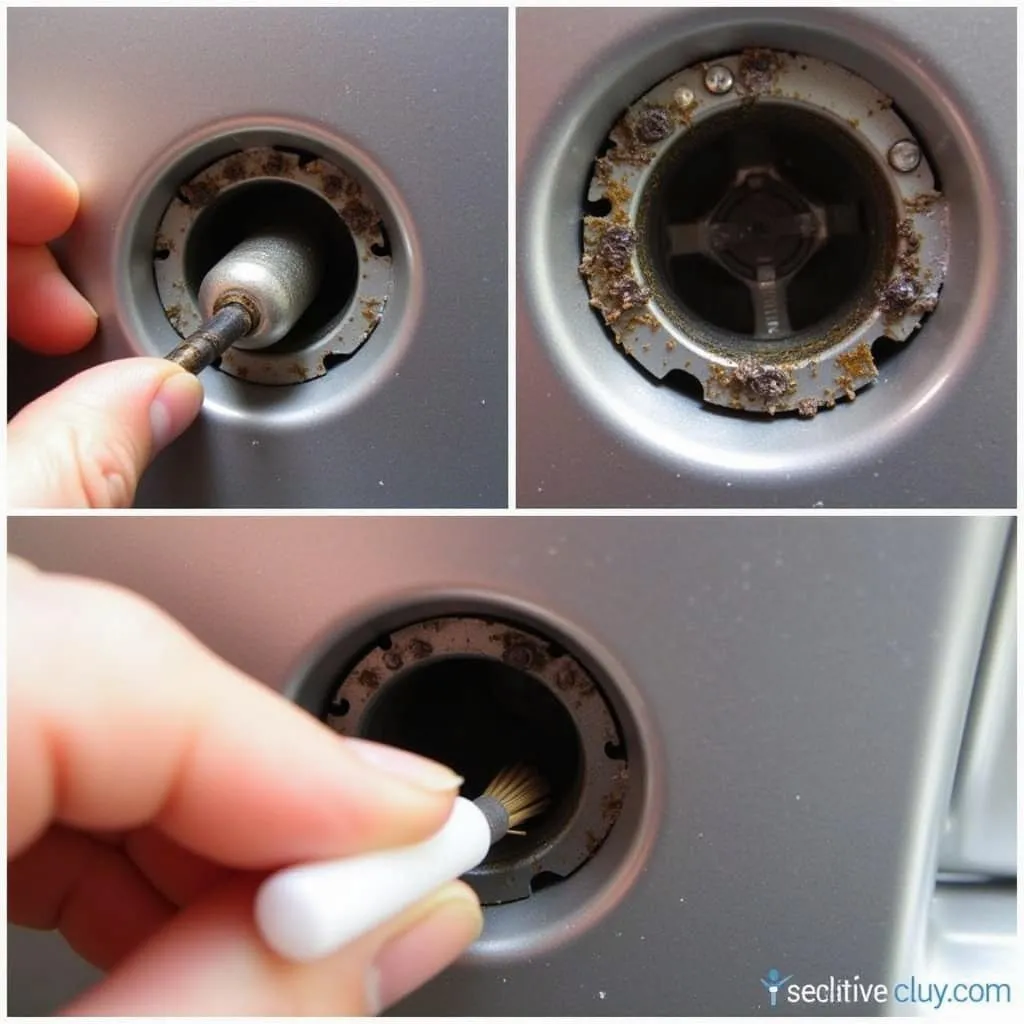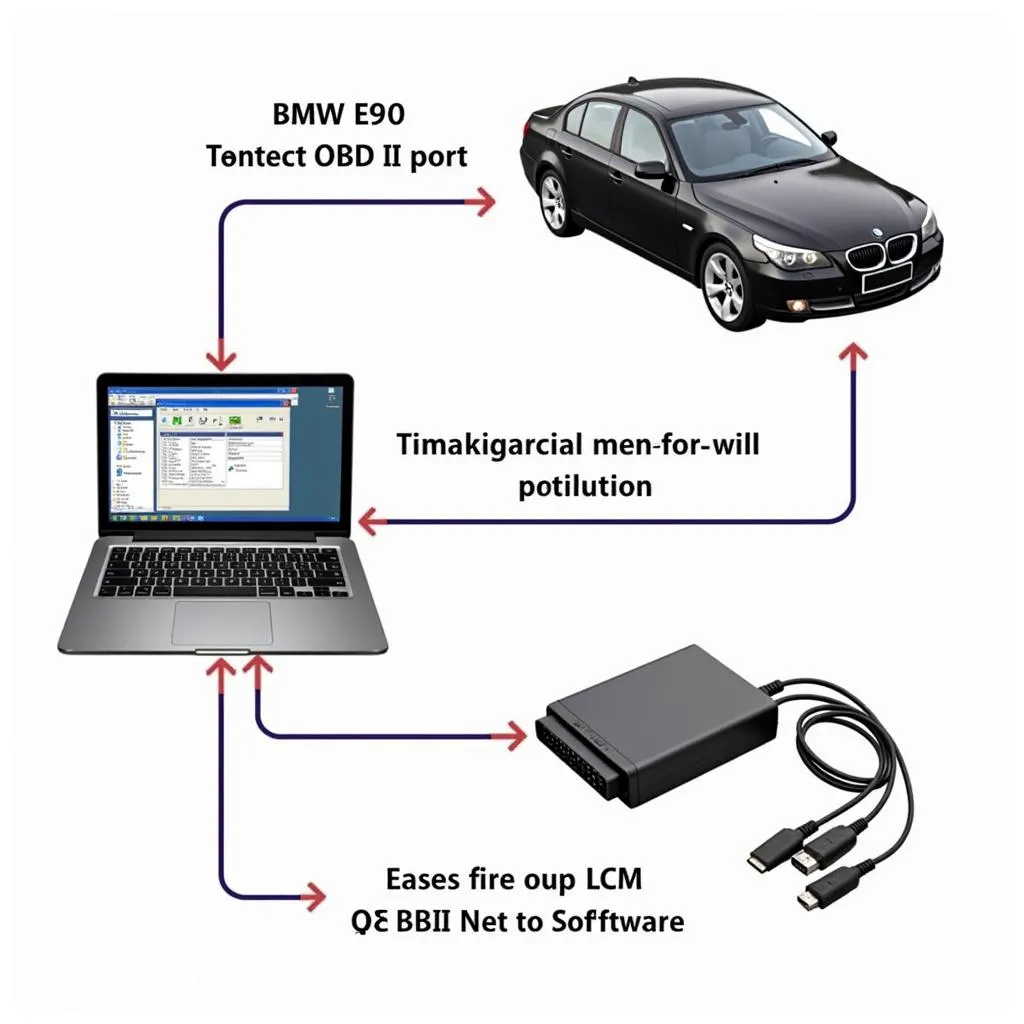BMW E90 Tail Light: A Comprehensive Guide to Troubleshooting and Repair
The iconic BMW E90, produced from 2005 to 2012, remains a popular choice for driving enthusiasts. However, like any vehicle, it can experience electrical issues, particularly with its tail lights. This comprehensive guide delves into the common problems associated with Bmw E90 Tail Lights, equipping you with the knowledge to diagnose and address these issues effectively.
Common BMW E90 Tail Light Problems
Several factors can contribute to tail light malfunctions in your BMW E90. Identifying the root cause is crucial for effective repair. Here are some prevalent issues:
- Burnt Out Bulbs: This is the most common and straightforward problem. Tail light bulbs have a limited lifespan and will eventually burn out.
- Faulty Wiring: Over time, the wiring harness connected to your tail lights can become frayed, corroded, or damaged, leading to electrical connectivity issues.
- Blown Fuses: Each tail light circuit is protected by a fuse. A blown fuse, often caused by a short circuit or power surge, will interrupt the power supply to the tail lights.
- Bulb Socket Corrosion: Corrosion on the bulb socket can prevent proper electrical contact, causing the tail light to malfunction.
- Faulty Light Control Module (LCM): The LCM controls various lighting functions in your E90. A malfunctioning LCM can disrupt signals to the tail lights.
Diagnosing BMW E90 Tail Light Problems
Before delving into repairs, it’s essential to accurately diagnose the problem. Here’s a systematic approach:
- Check for Warning Messages: Start by checking your instrument cluster for any warning messages related to the tail lights.
- Inspect the Bulbs: Carefully examine the tail light bulbs for any signs of burning or damage. If a bulb appears burnt out, replace it with a new one of the correct type.
- Inspect the Fuses: Locate your E90’s fuse box (refer to your owner’s manual) and check the fuses associated with the tail lights. A blown fuse will have a broken wire inside. Replace any blown fuses with new ones of the correct amperage.
- Examine the Wiring and Connectors: Visually inspect the wiring harness and connectors leading to the tail lights for any signs of damage, fraying, or corrosion. Repair or replace any damaged components.
 BMW E90 Tail Light Wiring
BMW E90 Tail Light Wiring
- Test the Bulb Sockets: Use a test light or multimeter to check for power and ground at the bulb sockets. If there’s no power, the issue may lie in the wiring, fuses, or LCM.
- Consider the LCM: If other components check out, a faulty LCM might be the culprit. Diagnosing LCM issues often requires specialized diagnostic tools and expertise.
Repairing BMW E90 Tail Light Problems
Once you’ve identified the root cause, you can proceed with the appropriate repairs. Here’s a breakdown of common fixes:
- Replacing Burnt Out Bulbs: This is a simple task that involves accessing the tail light housing and swapping out the old bulb with a new one.
- Repairing or Replacing Wiring: Damaged wiring harnesses should be repaired or replaced to ensure proper electrical conductivity.
- Replacing Fuses: Always use the correct amperage fuse when replacing a blown one. Using an incorrect fuse can lead to further electrical damage.
- Cleaning Corroded Bulb Sockets: Use electrical contact cleaner and a small brush to remove corrosion from the bulb sockets.
 Cleaning Corroded BMW E90 Tail Light Socket
Cleaning Corroded BMW E90 Tail Light Socket
- Addressing LCM Issues: Diagnosing and repairing or replacing a faulty LCM often necessitates the expertise of a qualified BMW technician or an experienced auto electrician.
When to Seek Professional Help
While some tail light issues are straightforward, others can be more complex. If you’re uncomfortable working with electrical components or if your diagnosis points to a potential LCM issue, it’s best to seek professional help. A qualified BMW technician or auto electrician has the specialized knowledge, tools, and experience to diagnose and address these issues safely and effectively.
BMW E90 Tail Light Coding
In some cases, especially after replacing certain tail light components, you may need to code your BMW E90’s LCM. Coding is the process of reprogramming the LCM to recognize and interact correctly with the new parts. This often requires specialized software and knowledge.
 BMW E90 LCM Coding
BMW E90 LCM Coding
Preventive Measures
Here are some preventive measures to minimize the likelihood of future tail light problems:
- Regularly Inspect Your Tail Lights: Make it a habit to periodically check your tail lights for any signs of malfunction.
- Address Bulb Issues Promptly: Replace burnt-out bulbs as soon as possible to avoid driving with impaired visibility.
- Keep Your Car Clean and Dry: Moisture and dirt can contribute to electrical issues. Keep your car’s interior and exterior clean and dry, paying attention to the tail light areas.
- Have Your Car Serviced Regularly: Regular servicing by a qualified technician can help identify and address potential electrical issues before they escalate.
Conclusion
Maintaining properly functioning tail lights is crucial for your safety and the safety of others on the road. By understanding the common causes of BMW E90 tail light problems and following the diagnostic and repair tips outlined in this guide, you can keep your vehicle operating reliably and safely. However, if you encounter complex issues or are unsure about performing repairs yourself, don’t hesitate to seek assistance from a qualified BMW technician or an experienced auto electrician.
Frequently Asked Questions (FAQs)
1. Why is only one of my BMW E90 tail lights working?
This could be due to a burnt-out bulb on the side that isn’t functioning, a blown fuse specific to that side, or a wiring issue isolated to that tail light circuit.
2. Can I use LED bulbs in my BMW E90 tail lights?
While LED bulbs offer energy efficiency and longevity, using aftermarket LED bulbs in your E90’s tail lights can trigger warning lights on your dashboard due to the difference in electrical resistance.
3. How long do BMW E90 tail light bulbs last?
The lifespan of tail light bulbs can vary depending on usage and driving conditions. However, it’s generally recommended to replace them every two to three years.
4. Can I drive my BMW E90 with a tail light out?
Driving with a tail light out is illegal in most jurisdictions and poses a safety risk. It’s crucial to address any tail light issues promptly.
5. Why are my BMW E90 tail lights flickering?
Flickering tail lights can indicate a loose or corroded bulb connection, a failing bulb, a wiring problem, or a faulty LCM.
6. Can I code my BMW E90 tail lights myself?
Coding requires specialized software, a compatible cable, and knowledge of BMW coding procedures. If you’re not familiar with these, it’s best to seek professional help.
7. How much does it cost to replace a BMW E90 tail light assembly?
The cost of a replacement tail light assembly can vary depending on factors like the model year, whether you choose OEM or aftermarket parts, and labor costs.
Don’t forget, if you need any assistance with your BMW E90’s tail lights or any other automotive issue, you can reach out to our team of experts at Car Diag Xpert. We offer comprehensive diagnostic and repair services, including coding and programming. Contact us via WhatsApp: +1(641)206-8880, Email: [email protected] or visit us at 276 Reock St, City of Orange, NJ 07050, United States. Our dedicated customer support team is available 24/7 to assist you. If you’re interested in learning more about BMW warning signals and their meanings, we have a dedicated article on BMW warning signals that you might find informative. We also have a helpful resource on BMW E90 light warning that delves deeper into various light-related issues you might encounter with your E90.
